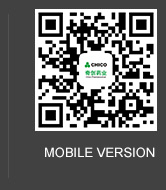



Abstract
Luseogliflozin is a sodium-glucose cotransporter 2 (SGLT2) inhibitor developed for the management of type 2 diabetes mellitus. Approved in Japan in 2014, it has undergone various studies assessing its efficacy and safety profile. This paper provides a comprehensive overview of luseogliflozin, including its chemical properties, development history, market performance, and competitive landscape.
Keywords
Luseogliflozin, SGLT2 inhibitor, type 2 diabetes mellitus, chemical properties, market analysis, global sales, generics.
Introduction
Luseogliflozin, marketed under the trade name Lusefi, is an SGLT2 inhibitor indicated for the treatment of type 2 diabetes mellitus. Its development and approval have contributed to the expanding arsenal of therapeutic options for diabetes management.
Chemical Properties
Luseogliflozin has the chemical formula C23H30O6S and a molar mass of 434.55 g·mol−1. Its structure comprises a benzene ring, a pyran ring, and a sulfonamide group, which are essential for its SGLT2 inhibitory activity.
Development and Approval Timeline
Developed by Taisho Pharmaceutical, luseogliflozin received its first global approval in Japan in March 2014. This timely approval positioned it as a significant addition to diabetes treatments available in the Japanese market.
Time on the Market
Since its approval in 2014, luseogliflozin has been available in Japan for over a decade. Its sustained presence indicates a stable position within the competitive landscape of diabetes medications.
Global Sales and Market Competition
While specific global sales figures for luseogliflozin are not readily available, its market presence in Japan suggests a positive reception. The SGLT2 inhibitor class, including drugs like canagliflozin, dapagliflozin, and empagliflozin, represents a competitive market segment with multiple therapeutic options for patients and healthcare providers.
Generics and Related Developments
The patent expiration of luseogliflozin has paved the way for generic formulations, increasing accessibility and potentially reducing costs for patients. Such developments are typical in the pharmaceutical industry, aiming to balance innovation with public health needs.
Conclusion
Luseogliflozin exemplifies the advancements in diabetes pharmacotherapy, offering patients an additional option for glycemic control. Its chemical design, coupled with a decade-long market presence, underscores its role in managing type 2 diabetes mellitus.
Active Pharmaceutical Ingredient
1018899-04-1
Sotagliflozin, (chemical grade, purity ≥99.0%) are currently supplied by our company. [Own compliance factory, fully support factory audit] For details, you can call the bottom line to get the latest price of the product!
Disclaimer:Products are only available to countries where there is no valid patent protection. Products still covered by patents rights are available exclusively for experimental or registration purpose pursuant to national applicable law, and shall be sold in strict accordance with the laws of the People's Republic of China and the laws of the Buyer's country. All products are not for human use. Buyer is obligated for evaluation of the patent situation in its domestic market and shall be held liable for uses which do not fall within the scope of the experimental or registration use exception and are not permitted by national applicable law.
References
Markham A, Elkinson S. Luseogliflozin: first global approval. Drugs. 2014 Jun;74(8):945-50.
Dutta D, Kadian J, Mahajan K, Dhall A, Sharma M. Efficacy and safety of luseogliflozin in improving glycaemic and non-glycaemic outcomes in type-2 diabetes: A meta-analysis. Diabetes Metab Syndr. 2023 Mar;17(3):102742.
If there is any infringement, please apologize and delete. If there are any errors, welcome to criticize and correct.
Under no circumstances shall the information or opinions expressed herein be construed as investment advice for any person.




International Department:

Copyright(C)2018 Anqing Chico Pharmaceutical Co., Ltd.
Supported byChinaChemNet
